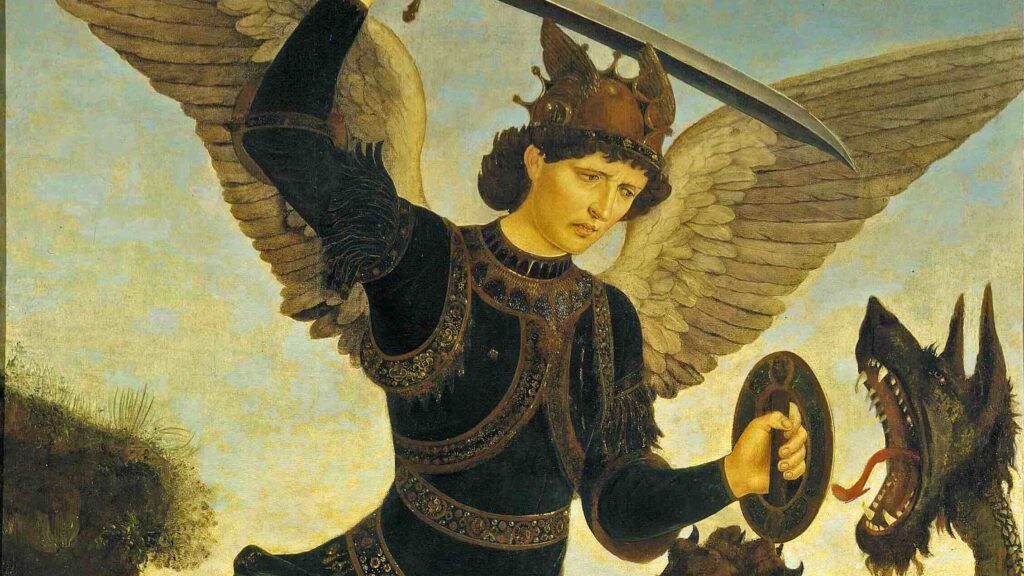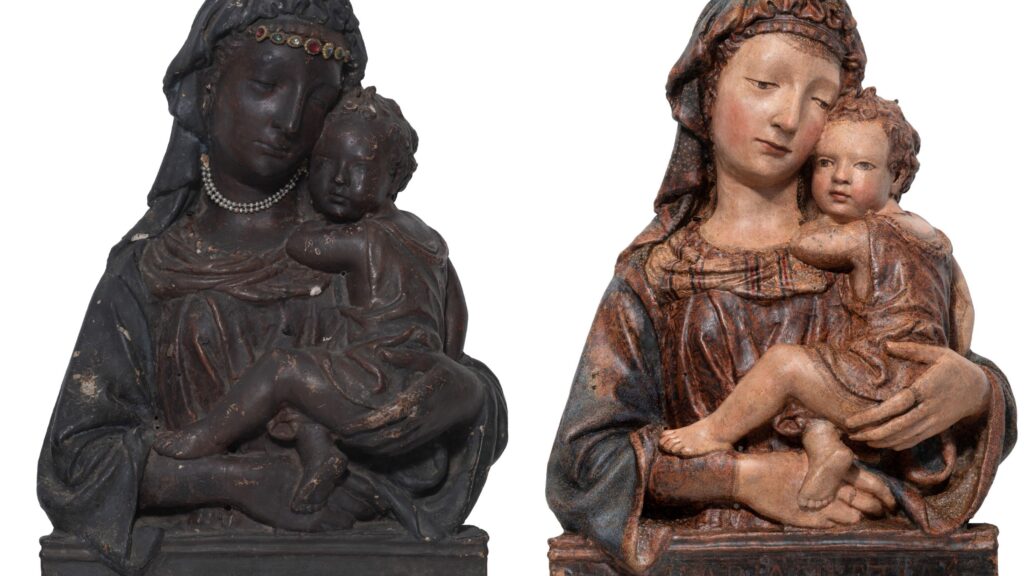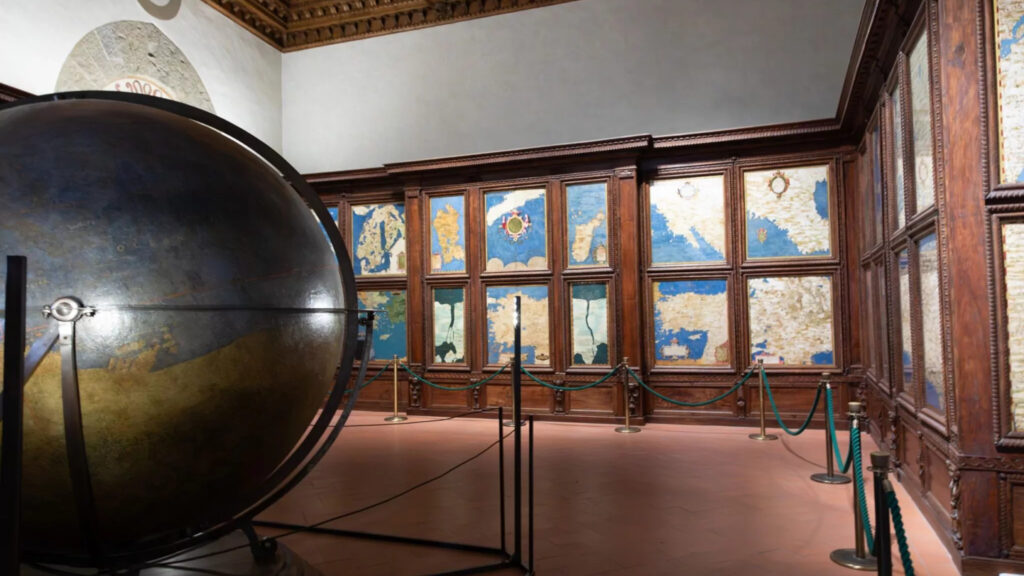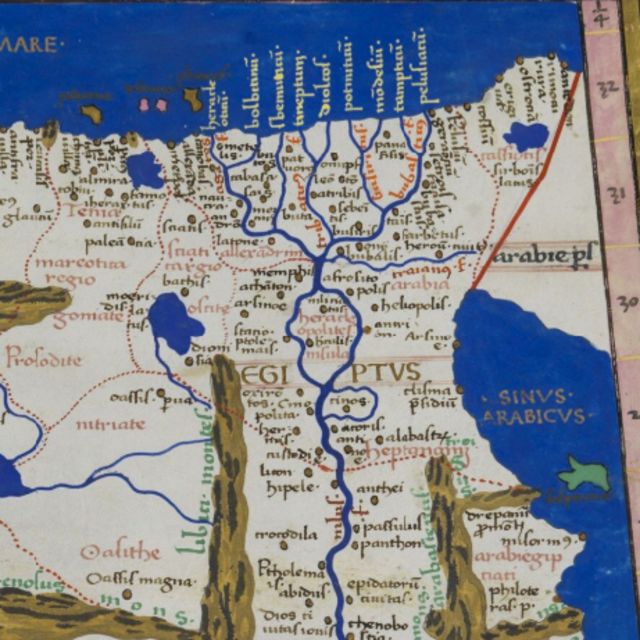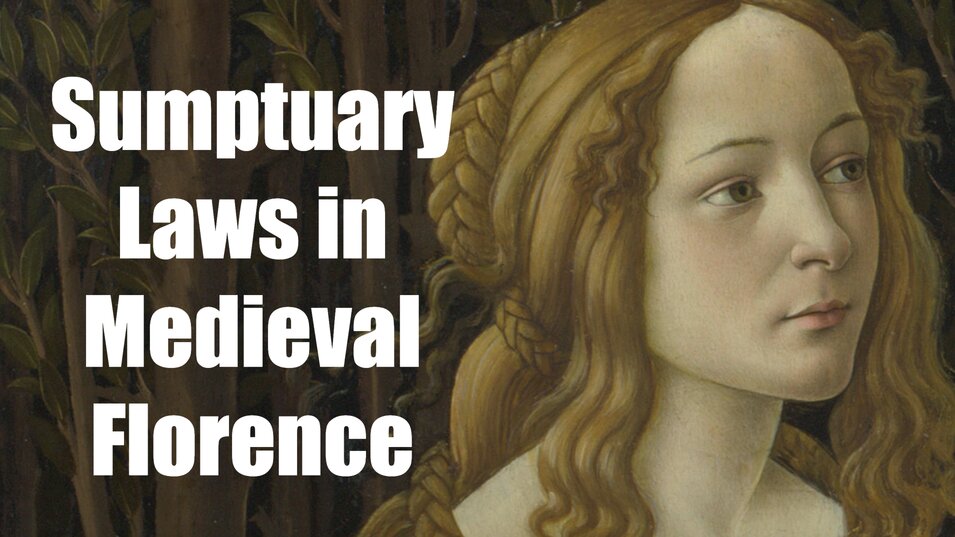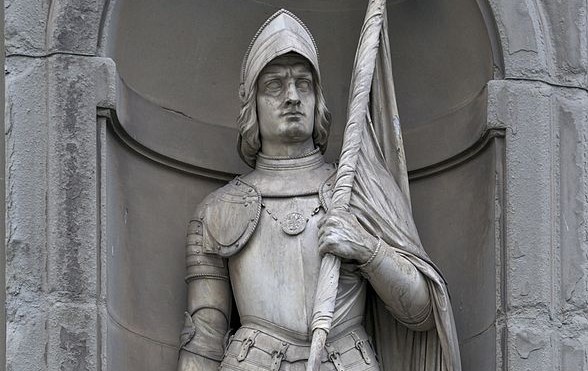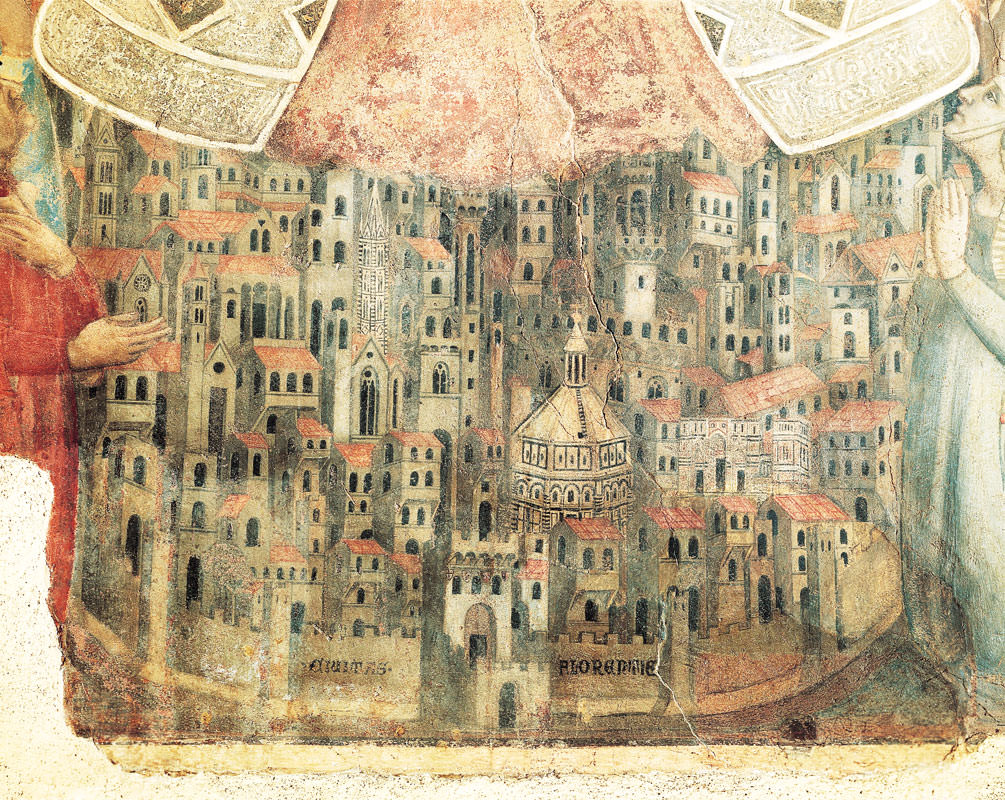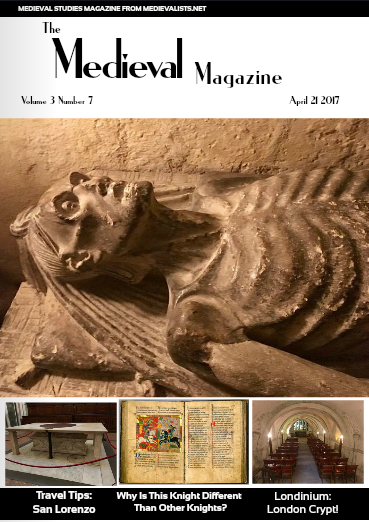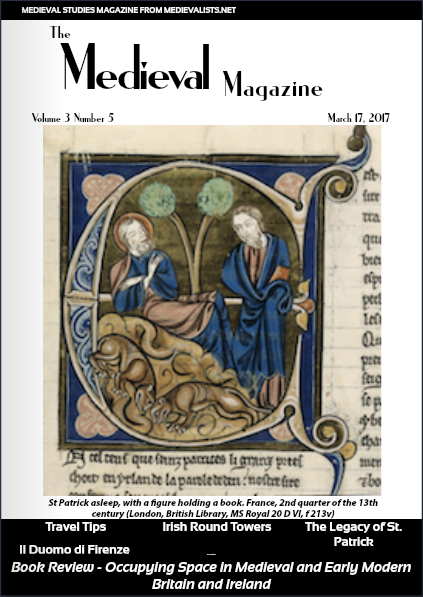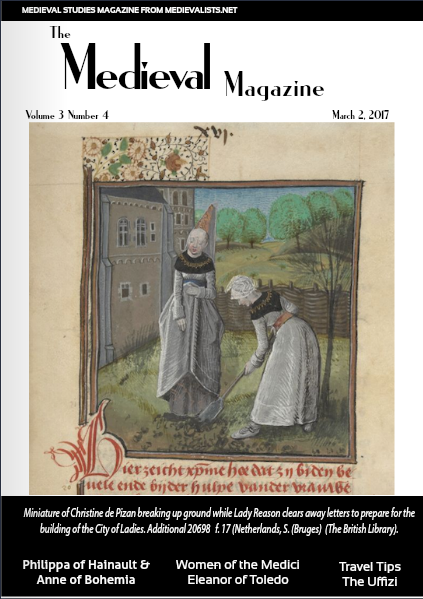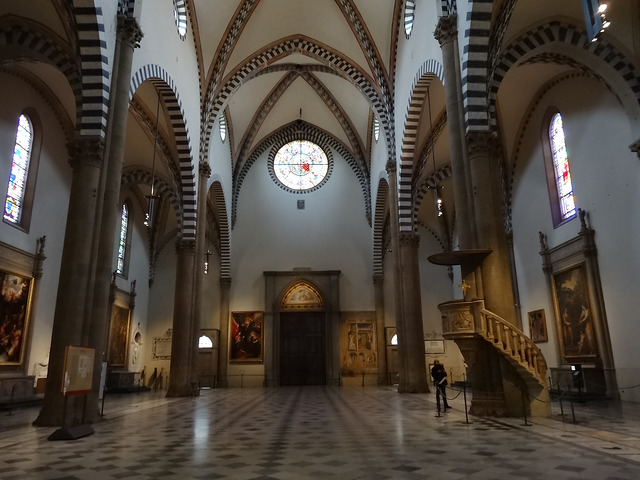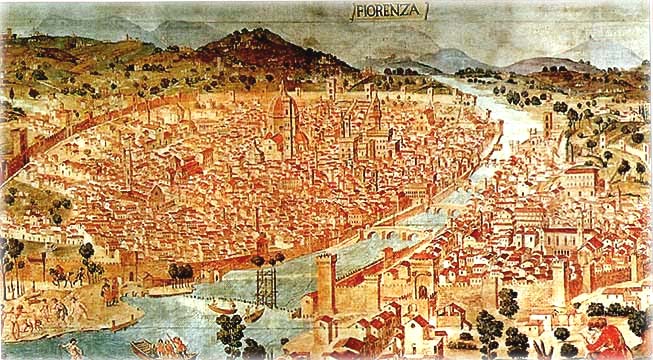15th-century Florentine Masterpiece to be Restored
Piero del Pollaiolo’s ‘Saint Michael the Archangel Defeating the Dragon’ will undergo conservation at the Bardini Museum
Lost for Decades, a Medieval Madonna and Child Returns in Stunning Restoration
A 15th-century stucco Madonna and Child, hidden for over 70 years, has undergone a dramatic restoration in Florence. Once discoloured and forgotten, the sculpture now reveals its original colours and exquisite detail.
Renaissance Map Room in Florence Restored After Three-Year Conservation Effort
Florence’s famed Map Room in the Palazzo Vecchio has been fully restored after a meticulous three-year project, reviving its 16th-century maps, globe, and intricate wooden cabinets for visitors to experience both in person and online.
New Medieval Books: The Stone Witch of Florence
Set in Florence at the height of the Black Death, this novel tells the story of a woman who returns from banishment to help save the city and uncover a conspiracy. It’s a blend of historical fiction and fantasy, with a bit of magic.
Political Advice from a Medieval Statesman
How should one govern a state? For answers, we can turn to the wisdom of Gino di Neri Capponi, a 15th-century statesman whose advice on politics and governance remains surprisingly relevant. Written nearly 600 years ago, Capponi’s insights continue to offer valuable lessons for both modern leaders and individuals alike.
14th-century altarpiece ‘Madonna of the Snow’ restored
The Madonna of the Snow altarpiece, painted by Jacopo di Cione in the 14th century, has been restored and returned to the church of SS. Apostoli e Biagio in Florence.
14th-century Florentine Villa for Sale
Want to live like a medieval Florentine noble? If you have 12,000,000 €, then you can buy a villa which dates back to the 14th century.
14 Reasons Why Medieval Florence was Great
Medieval Florentines were very proud of their city. One 15th-century citizen even wrote down 14 reasons why.
Medieval chronicle reveals massive charitable bequest
A recently translated medieval chronicle has detailed the story of a huge charitable bequest that took place in the Italian city of Florence.…
Dante’s Florence
We travel to medieval Florence with the famous writer Dante Alighieri. In this episode of the Medieval Grad Podcast, Elisabeth Trischler talks with Lucie Laumonier about the city of Florence and how it inspired Dante’s Divine Comedy.
Christian-Muslim Diplomacy – Gestures and Words: European Ambassadors and the Mamluk Sultanate
I would like to deal with the instructions given by Christian powers to their ambassadors sent to the Mamluk sultanate.
‘Sfacciate donne fiorentine’: Sumptuary Laws in Medieval Florence
The preoccupation with the way women dressed was constant in Florence during the thirteenth and fourteenth centuries, so much so that in almost every decade some new legislation would appear trying to respond to the new fashions that were becoming popular in the Italian city.
Quiz: The Art of Renaissance Florence
Here are twelve works of art from Florence between the 13th and 16th centuries. Do you know which artist created them?
The painting career of Piero di Cosimo (1462-1522)
The Florentine painter has historically proven to be among the most elusive artists of the Italian Renaissance and yet acted as a seminal figure in the artistic transitions occurring from the close of the fifteenth century.
The Florentine Army in the Age of the Companies of Adventure
The Florentine army was, in contrast to the current literature, not an ad hoc and temporary entity but the product of careful consideration and coordination.
From Noblissima Dux to Beata: Expressions of Female Authority and Influence in Medieval Florence
This thesis argues that, by examining four influential women of Florence and northern Italy over some five centuries’ time, historians can view change over time related to female authority and how it reflects larger social norms.
A Renaissance Instrument to Support Nonprofits: The Sale of Private Chapels in Florentine Churches
The most important nonprofit in Renaissance Florence, the Church had two clear objectives: to address the needs of the parishioners, and to build churches in order to propagate the faith.
The Medieval Magazine (Volume 3, Issue 7)
In our latest issue: Being lovesick was a real disease in the Middle Ages! Judaism, War, and Chivalry: Why is this Knight Different than Other Knights? Travel Tips: San Lorenzo’s Medici Crypt! Crusade in Europe
The Medieval Magazine: (Volume 3, Issue 5)
The latest issue of the medieval magazine! The Legacy of St. Patrick, Florence – Part II: Visiting the Duomo, How King Arthur became one of the most pervasive legends of all time, A look at Ireland’s mysterious medieval round towers
The Medieval Magazine: Celebrating International Women’s Day (Volume 3, Issue 4)
We’ve just released our latest issue of the Medieval Magazine in celebration of International Women’s Day!
The Vaults of Santa Maria Novella and the Creation of Florentine Gothic
Historians of Gothic architecture, among them Louis Grodecki, have noted that Santa Maria Novella is one of the most beautiful examples of Italian Gothic without attempting to specify just what it is that sets Santa Maria Novella apart.
How to Defeat a Tyrant: The Florentines against the Duke
In a time of crisis the Republic of Florence turned to a brash noble to lead their city. He soon turned into a disgraceful tyrant. Could the Florentine citizens overthrow him before a plot to murder hundreds of people could be carried out?
The Florentine Archives in Transition: Government, Warfare and Communication (1289–1530 ca.)
Focusing on the important case of Florence, the administrative uses of records connected to government, diplomacy and military needs will be discussed, and evidence will be provided that such documentary practices accelerated significantly during the so-called Italian Wars (from 1494 onwards).
Before the Florin: The origins of Florence’s economic boom
The minting of the gold florin in 1252 is commonly considered to herald the beginning of Florence’s economic boom.
Civic Knighthood in the Early Renaissance: Leonardo Bruni’s De militia (ca. 1420)
Leonardo Bruni’s aim in the De militia (ca. 1420) was to co-opt the most glamorous of medieval ideals, the ideal of chivalry, and to reinterpret it in terms of Greco-Roman ideals of military service.
